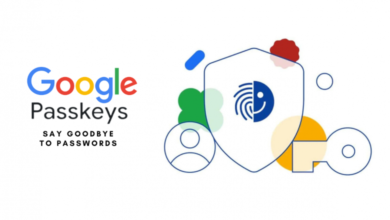
Blockchain Technology and Its Impact on Cybersecurity
Introduction to Blockchain Technology
Blockchain technology, often associated with cryptocurrencies like Bitcoin, has rapidly evolved into a transformative force across various industries. Fundamentally, a blockchain is a decentralized, distributed ledger that records transactions across multiple computers in a way that ensures the data is immutable and transparent. The core attributes of blockchain technology—decentralization, transparency, immutability, and security—make it a promising solution for enhancing cybersecurity.
How Blockchain Works
At its core, a blockchain consists of a chain of blocks, each containing a list of transactions. Here’s a simplified breakdown of how blockchain works:
- Transaction Initiation: A transaction is requested and broadcast to a peer-to-peer network consisting of computers, known as nodes.
- Verification: The network of nodes validates the transaction and the user’s status using known algorithms.
- Block Creation: Once verified, the transaction is combined with other transactions to create a new block of data for the ledger.
- Chain Addition: The new block is added to the existing blockchain in a way that is permanent and unalterable.
- Completion: The transaction is complete, making it permanently recorded and visible to all participants in the network.
Key Features of Blockchain
- Decentralization: Unlike traditional databases controlled by a central authority, blockchain operates on a peer-to-peer network, reducing the risk of a single point of failure.
- Transparency: All transactions are recorded on a public ledger, providing complete transparency.
- Immutability: Once a transaction is recorded in a block and added to the chain, it cannot be altered or deleted.
- Security: Advanced cryptographic techniques ensure that the data within the blockchain is secure and resistant to tampering.
Impact of Blockchain on Cybersecurity
Enhancing Data Integrity
Blockchain’s immutability ensures that once data is written, it cannot be altered, reducing the risk of data tampering and unauthorized modifications. This is crucial for maintaining the integrity of sensitive information such as financial records, personal data, and contractual agreements.
Improving Authentication and Access Control
Traditional authentication systems, which often rely on passwords, are vulnerable to attacks. Blockchain enables more secure methods such as digital identities and multi-factor authentication (MFA). For instance, blockchain-based digital identity systems can provide a decentralized and tamper-proof way to verify identities, reducing the risk of identity theft and fraud.
Securing IoT Devices
The Internet of Things (IoT) involves a vast network of interconnected devices, which are often poorly secured and vulnerable to attacks. Blockchain can enhance the security of IoT devices by providing a decentralized approach to managing data and ensuring secure communications between devices. This reduces the risk of data breaches and unauthorized access.
Protecting Against DDoS Attacks
Distributed Denial of Service (DDoS) attacks overwhelm systems with excessive traffic, causing disruptions. Blockchain can mitigate such attacks through decentralized networks. By distributing data across a decentralized network, blockchain reduces the risk of single points of failure that DDoS attacks typically exploit.
Enhancing Supply Chain Security
In supply chain management, blockchain can provide an immutable record of the journey of goods from production to delivery. This transparency ensures that all parties involved can verify the authenticity and integrity of the products, reducing the risk of counterfeit goods and ensuring regulatory compliance.
Also Check
Challenges and Considerations
Despite its potential, blockchain technology is not without challenges:
- Scalability: Blockchain networks can become slow and inefficient as they grow, making it difficult to handle large volumes of transactions quickly.
- Energy Consumption: The consensus mechanisms used in blockchain, particularly Proof of Work (PoW), consume significant amounts of energy.
- Regulatory Uncertainty: The regulatory environment for blockchain technology is still evolving, creating uncertainties for businesses and developers.
- Complexity: Implementing and managing blockchain systems requires significant expertise and resources.
Future Prospects
As blockchain technology continues to mature, its integration with other emerging technologies such as artificial intelligence (AI) and machine learning (ML) could unlock new possibilities for enhancing cybersecurity. For example, AI algorithms could analyze blockchain data to detect patterns and anomalies, providing early warning signs of potential cyber threats.
Conclusion
Blockchain technology holds significant promise for transforming cybersecurity by enhancing data integrity, improving authentication, securing IoT devices, and protecting against various cyber threats. While challenges remain, ongoing advancements and innovative applications of blockchain are likely to overcome these hurdles, paving the way for a more secure digital future. As businesses and governments continue to explore and adopt blockchain solutions, the landscape of cybersecurity will undoubtedly be reshaped, offering stronger protection against the ever-evolving threats in the digital world.








